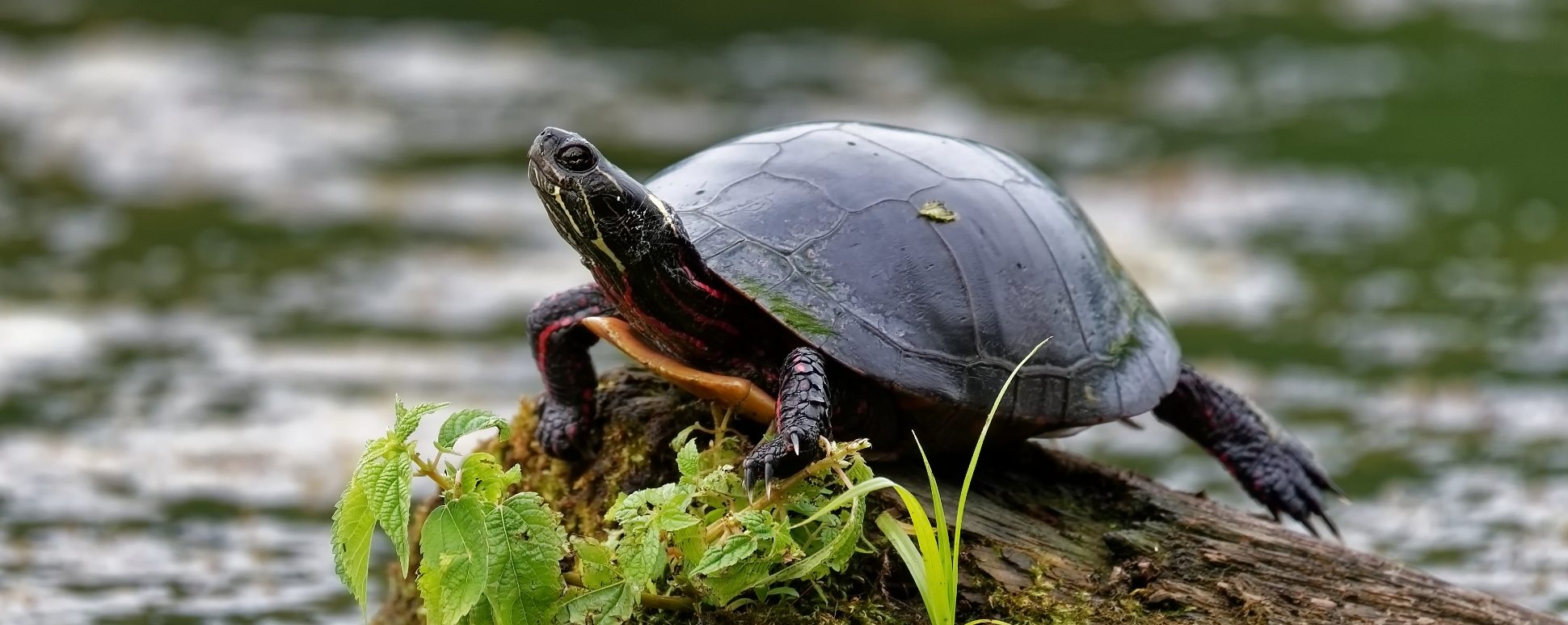
Exotic Tortoises
Several species of exotic tortoises are currently present in Italy’s natural and semi-natural environments. They adversely affect the aquatic communities of colonised environments by preying on a wide variety of animal species, including aquatic insects, crustaceans, fish and amphibians, and also feed on aquatic vegetation; they also pose risks to human health.
Invasive alien bog turtles of EU importance:
Their reproduction, transport, purchase, sale and exchange, release into the wild and breeding is prohibited.
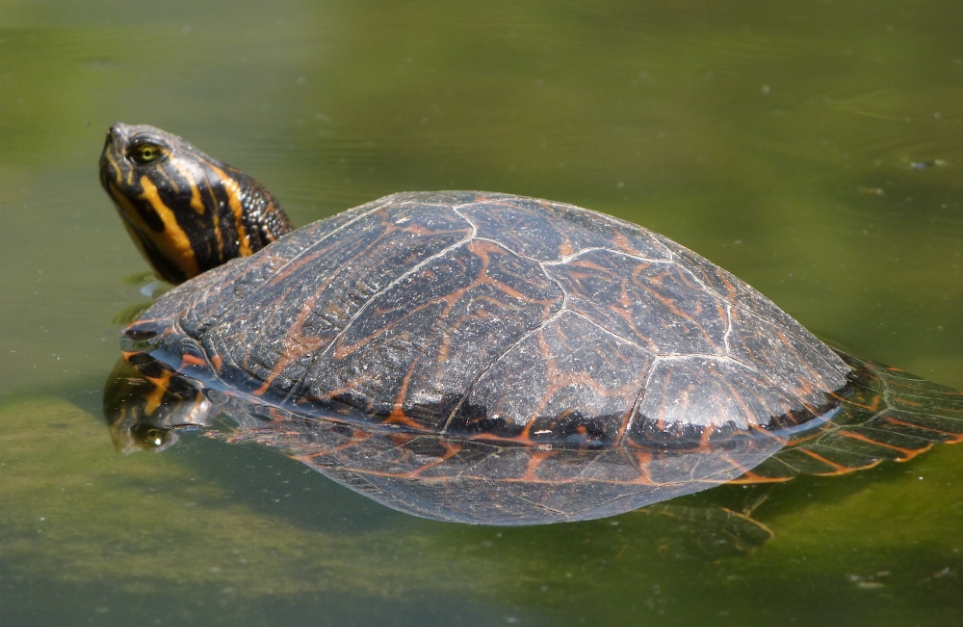
The American pond terrapin Trachemys scripta
The American pond terrapin Trachemys scripta ssp is an Invasive Alien Species and has long been the most popular bog tortoise in the animal trade, with over 52 million individuals exported from the USA. between 1989 and 1997, and simultaneously the world’s most abandoned reptile introduced into non-native environments. The species shows advantageous competitive characteristics when compared to the native species: it reaches sexual maturity at a younger age, has a larger body size and a faster growth and development rate, and is more fecund, with larger eggs and neonates than E. orbicularis. T. scripta competes with E. orbicularis for food, nesting sites and thermoregulation, often confining E. orbicularis to less favourable locations or forcing it to reduce its exposure to light and sunlight. The continued release of T. scripta and other exotic tortoises, which are still freely traded, into the natural ecosystems inhabited by E. orbicularis increases the risk of parasite transmission in the native species.
There are two subspecies of the genus Trachemys:
Trachemys scripta scripta, known as the yellow belly Slider, identifiable by the presence of an obvious crescent-shaped yellow spot behind the eyes on either side of the head.
Trachemys scripta elegans, known as the red eared Slider, identifiable by the exclusive presence of elongated red spots behind the eyes on either side of the head.
Finally, there is a hybrid form between the two subspecies, previously classified as T. s. troostii (Holbrook, 1836) and commonly called the Cumberland Slider, whose validity as a subspecies has recently been refuted through genetic analysis (Parham et al. 2020).
Other species of exotic pond terrapins, which have been considerably traded for years, are increasingly numerous in classic areas of neglect: metropolitan water collections such as ponds in urban parks, fountains even of monumental value, unused swimming pools, renaturated former quarries, etc., and semi-natural water collections: fountains, sports fishing ponds, collector canals, navigli docks, etc.
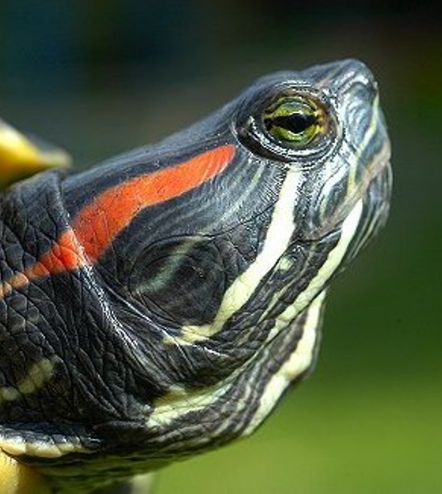
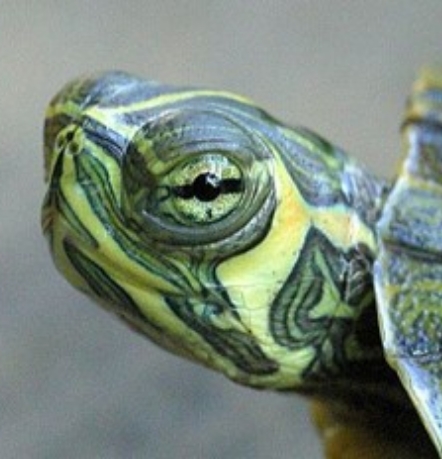
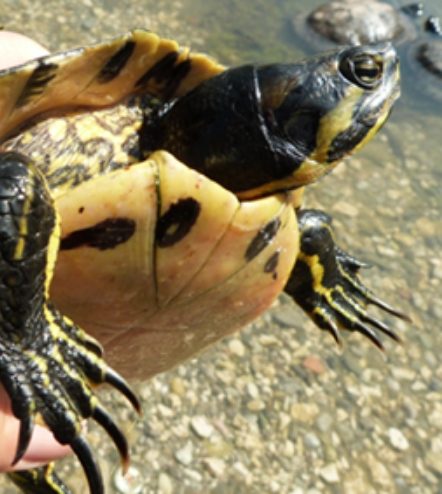
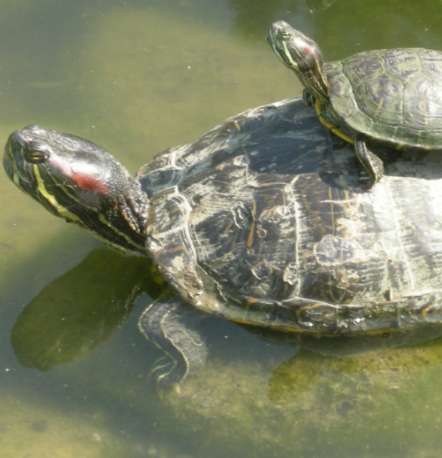
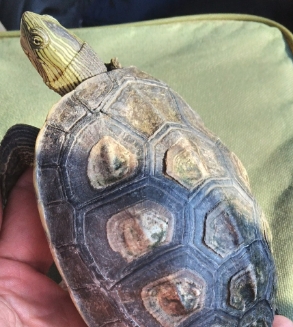
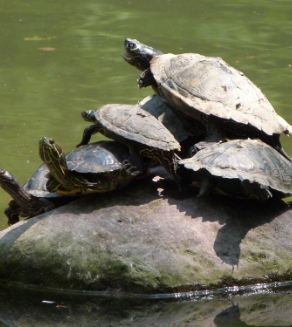
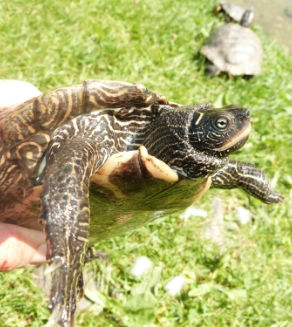
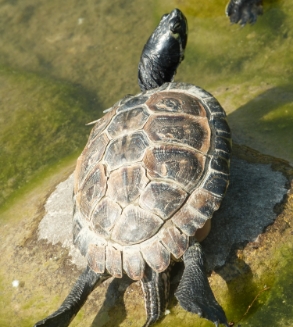
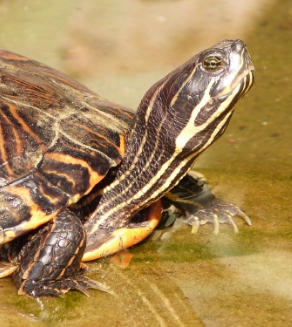
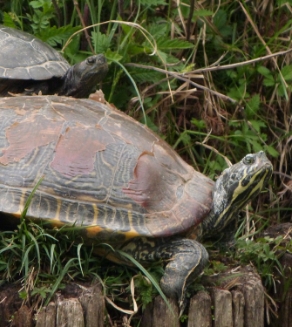
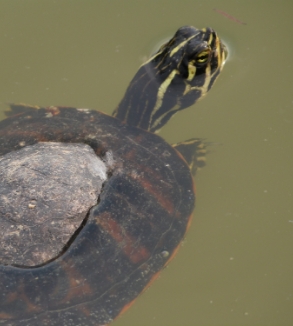
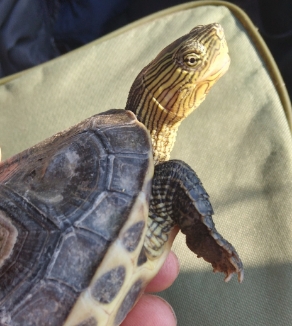
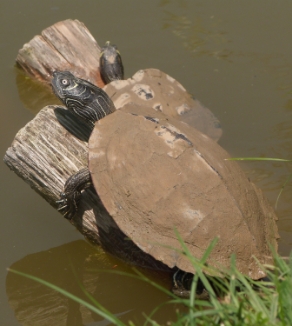
These are the species that have been found so far:
– Apalone spinifera
– Apalone ferox
– Chelydra serpentina (known as the snapping turtle; it is banned from possession and sale in Italy as it is considered dangerous to public health and safety; when out of water it becomes very aggressive)
– Chelus fimbriatus
– Chelodina longicollis
– Clemmys guttata
– Chrysemys picta picta
– Graptemys geographica
– Graptemys ouachitensis
– Graptemys pseudogrographica ppseudogrographica
– Graptemys chrysemys picta bellii
– Mauremys sinensis
– Mauremys reversii
– Pelomedusa subrufa
– Pseudemys concinna
– Pseudemys c. floridana
– Pseudemys nelsonii
– Pseudemys peninsularis
– Pseudogrographica kohni
– Pelodiscus sinensis
– Sternotherus carinatus
– Sternotherus odoratus
– Testudo graeco